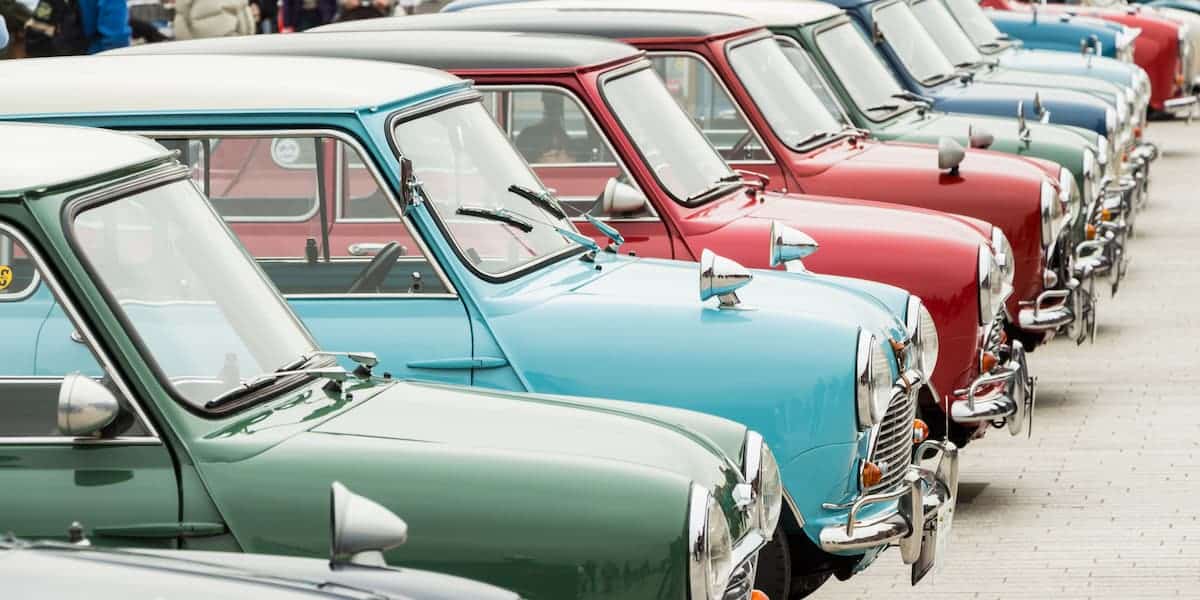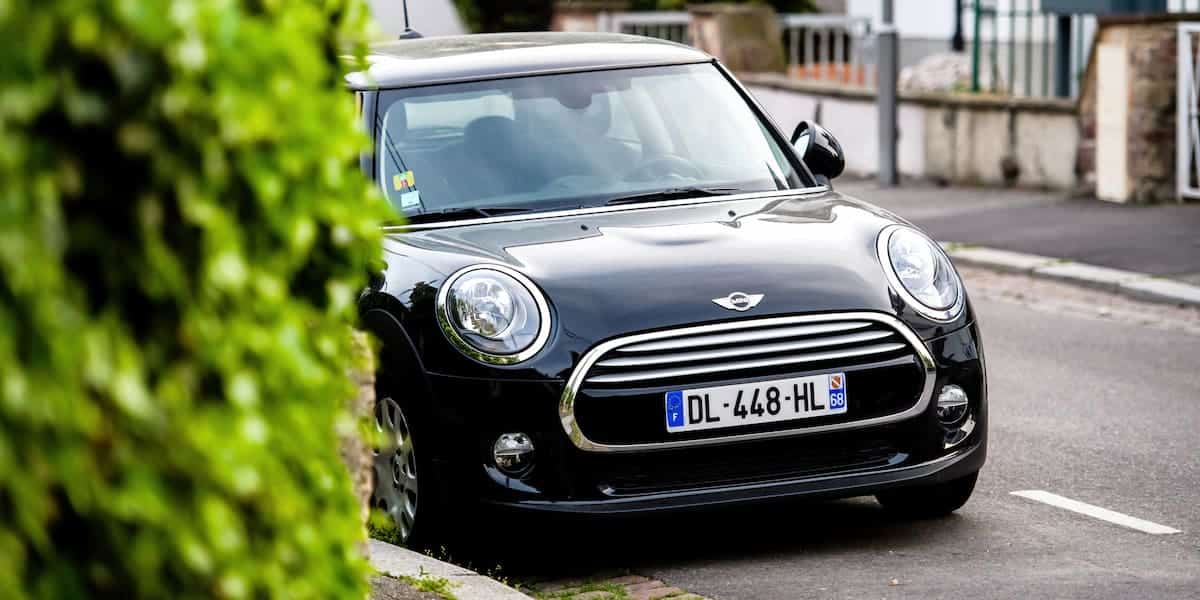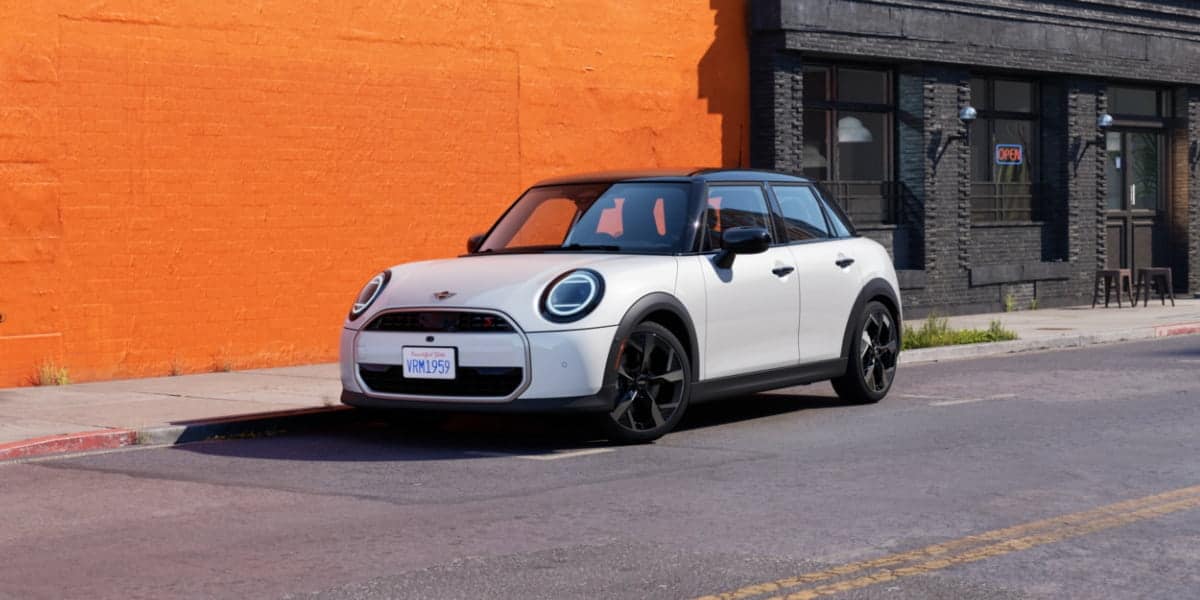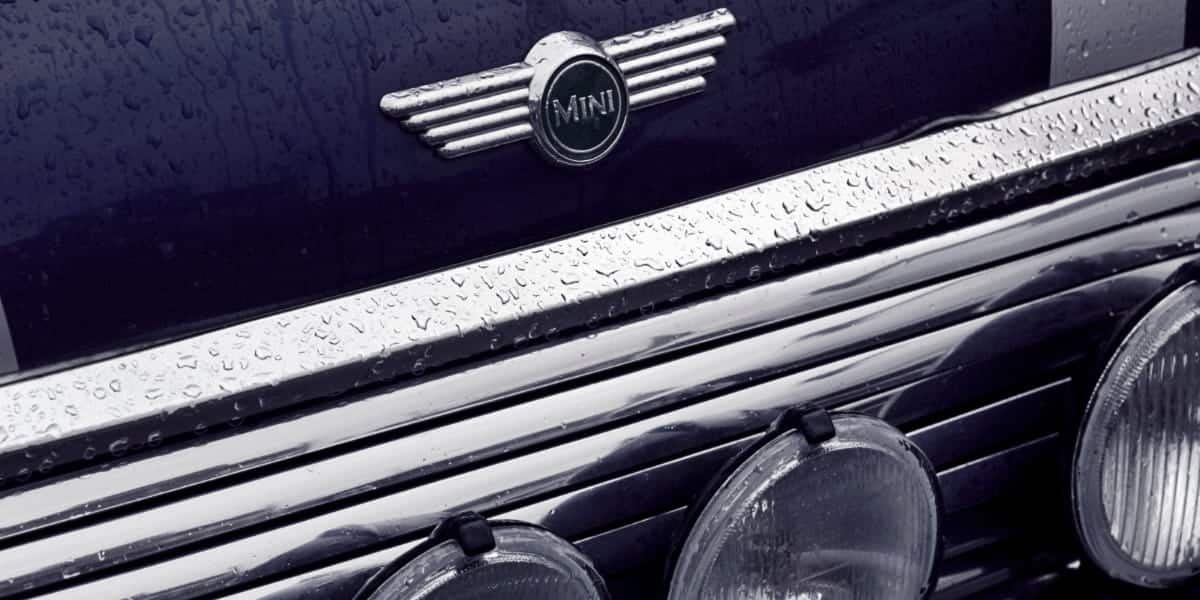The Mini Cooper is more than just a small car—it’s a cultural icon. Known for its fun personality, compact design, and zippy handling, the Mini has been turning heads for over 60 years. From its early days as a British classic to the sleek and tech-savvy models of today, Mini Cooper generations have kept their charm while embracing new technology and performance upgrades.
If you love cars with personality, you’re in the right place! Let’s take a journey through the history of Mini, exploring its biggest milestones and looking at Mini Cooper models by year to see how this beloved car has evolved.

The Classic Mini (1959-2000): The Car That Started It All
When people think of compact cars with personality, the Mini Cooper is often the first to come to mind. But before it became a modern symbol of fun and efficiency, it started as a revolutionary idea in the late 1950s.
Why Was the Classic Mini Created?
In the 1950s, fuel prices were soaring due to the Suez Crisis, making large cars impractical for many drivers. The British Motor Corporation (BMC) saw an opportunity: What if they could create a small, affordable car that was still comfortable and practical?
That’s where Sir Alec Issigonis, the Mini’s legendary designer, came in. His goal was simple—make a car that:
- Used as little space as possible but felt roomy inside
- Handled well and was fun to drive
- Was affordable for the average driver
His solution was to mount the engine sideways instead of lengthwise, creating one of the first transverse-engine, front-wheel-drive cars. This design allowed for more interior space while keeping the car compact. The Mini’s small size, combined with its lightweight build and nimble handling, made it an instant success.
What Made the Classic Mini Special?
The Mini wasn’t just a car—it was a movement. It became a cultural icon, especially in Europe, thanks to its unique design and fun driving experience.
Key features that set the Mini apart:
- Compact size – At just 10 feet long, it was easy to park and maneuver in city traffic.
- Surprisingly spacious – Clever engineering allowed four adults to sit comfortably despite the car’s small footprint.
- Fun to drive – With its lightweight frame and precise handling, the Mini felt more like a go-kart than a traditional car.
- Affordability – It was one of the most budget-friendly cars on the market.
- Distinctive style – The Mini’s boxy, cheerful design made it instantly recognizable.
Beyond practicality, the Mini became a symbol of the 1960s, appearing in movies, TV shows, and even being embraced by celebrities. It wasn’t just a car—it was a lifestyle.
Mini Cooper Models by Year: Standout Versions
Over its 40-year production run, the classic Mini saw many updates and improvements. While the overall design remained similar, different versions introduced new features and performance upgrades.
1959 Mini Mk1 – The Original Mini
- First introduced by BMC as an affordable, fuel-efficient small car
- Designed with a transverse-mounted engine and front-wheel drive
- Known for its simple, no-frills design
1961 Mini Cooper – The Performance Upgrade
- Developed with race car designer John Cooper, who saw the Mini’s motorsport potential
- Received a more powerful engine and better handling
- Introduced as a sportier version of the standard Mini
1963 Mini Cooper S – The Racing Icon
- High-performance version of the Mini Cooper
- Gained fame in motorsports, including multiple wins at the Monte Carlo Rally
- Featured a larger, more powerful engine for improved speed and agility
1976 Mini Mk4 – The Modernized Classic
- Introduced updates such as improved suspension and minor design tweaks
- Continued to be popular in Europe and the UK
- Kept the same iconic look despite technological upgrades
Why Did the Classic Mini Stop Production?
Despite its popularity, the original Mini couldn’t last forever. By the late 1990s, automotive safety regulations were becoming stricter, and the Mini’s design was showing its age.
Some reasons for the Mini’s retirement in 2000 include:
- Safety concerns – The original design lacked modern safety features like airbags and reinforced frames.
- Outdated technology – Competing small cars were offering more comfort, better fuel efficiency, and updated interiors.
- Changing regulations – Emission and crash-test standards made it difficult to keep producing the original Mini.
Production officially ended in October 2000, marking the end of an era. But the Mini name wasn’t going away. Instead, it was about to enter an exciting new chapter under the ownership of BMW.
The BMW Era: A New Mini for a New Generation
By the late 1990s, the classic Mini was showing its age. While it had a devoted following, changing safety regulations and modern automotive standards made it difficult to keep the original design in production. That’s where BMW stepped in.
In 2001, BMW took over Mini and gave it a complete redesign. The goal was to modernize the Mini while keeping everything people loved about the original: its compact size, fun driving experience, and unmistakable style.
What Changed with BMW’s Mini?
The new Mini was still small, but it was noticeably bigger, safer, and more advanced than the classic version. BMW made several major improvements:
- Increased size – The new Mini was larger than the original, giving drivers more interior space without losing its city-friendly design.
- Better safety features – BMW added airbags, anti-lock brakes, and a stronger frame to meet modern safety standards.
- Upgraded technology – The new Mini came with features like power steering, air conditioning, and a modern infotainment system.
- More powerful engines – Unlike the classic Mini, which had small, low-powered engines, BMW’s Mini offered supercharged and turbocharged versions for extra speed and performance.
- Iconic go-kart handling – Even with these updates, BMW ensured that the new Mini kept its nimble and responsive handling, making it just as fun to drive as before.
The first BMW Mini was released in 2001, marking the beginning of a whole new era for Mini Cooper generations.
Mini Cooper Models by Year: A Look at BMW’s Mini Generations
BMW introduced several generations of the Mini, each with improvements in technology, performance, and style.
First Generation (2001-2006): The Mini is Reborn
The first BMW Mini was a huge success, blending retro design with modern features. It was still instantly recognizable as a Mini, but with a sleeker look and a much-improved driving experience.
Key Models from the First Generation:
2001 Mini Cooper (R50) – The First BMW Mini
- The first all-new Mini in over 40 years
- Featured a 1.6-liter engine, offering more power than the classic Mini
- Came with modern features like power steering, air conditioning, and airbags
- Available in Cooper and Cooper S models, with the Cooper S offering more performance
2002 Mini Cooper S (R53) – Supercharged Performance
- Introduced a supercharged engine, boosting horsepower significantly
- Included sportier suspension and a more aggressive design
- Quickly became a favorite among performance enthusiasts
2005 Mini Convertible (R52) – Open-Air Fun
- The first convertible Mini, adding a power-folding soft top
- Kept the same go-kart handling while offering a fun, open-top experience
- Available in both Cooper and Cooper S versions
Why Was the First BMW Mini So Popular?
The first-generation BMW Mini was an instant hit. It offered everything people loved about the original Mini, but with the comfort, safety, and performance of a modern car.
Here’s why it stood out:
- Retro-modern design – The new Mini looked familiar but fresh, appealing to longtime Mini fans and new buyers alike.
- Fun to drive – Its responsive steering, tight suspension, and quick acceleration made it one of the most exciting small cars on the market.
- Customization options – Mini introduced a wide range of colors, interior trims, and performance packages, allowing buyers to personalize their car like never before.
- Reliable and practical – While the classic Mini was charming, it wasn’t always practical. The new Mini was much more reliable and comfortable for daily driving.
This generation of the Mini set the stage for even more innovation in the years to come. As BMW continued to refine and expand the Mini lineup, the brand grew from a nostalgic throwback to a global success story.
In the next generation, Mini would push performance even further and introduce new body styles to appeal to an even wider audience.

Second Generation (2007-2013): More Power, More Tech
By 2007, BMW was ready to take the Mini Cooper to the next level. While the first BMW Mini (2001-2006) was a huge success, there was room for improvement in performance, technology, and interior design. That’s where the second-generation Mini, known as the R56, came in.
This new Mini stuck to the same winning formula—small, stylish, and fun to drive—but with smarter engineering, better fuel efficiency, and a turbocharged engine that replaced the previous supercharger.
What Changed in the Second-Generation Mini?
BMW listened to customer feedback and made several key upgrades in the 2007 Mini Cooper (R56) to improve the driving experience:
- Switched from a supercharged engine to a turbocharged one – Turbocharged engines were more fuel-efficient while still delivering the quick acceleration and sporty feel Mini drivers loved.
- Refined interior – The cabin featured higher-quality materials, an updated dashboard, and more comfortable seats for a premium feel.
- Better fuel economy – BMW improved efficiency without sacrificing performance, making the Mini an even better choice for city driving.
- Updated technology – The second-generation Mini introduced advanced infotainment options, improved navigation, and upgraded safety features.
The goal was to make the Mini more powerful, efficient, and comfortable, while still keeping its iconic design and go-kart-like handling.
Mini Cooper Models by Year: Key Second-Generation Models
BMW expanded the Mini lineup during this generation, adding new performance versions and body styles to appeal to a wider range of drivers.
2007 Mini Cooper (R56) – The Turbocharged Evolution
- Launched as the second-generation Mini with a fresh design and improved performance.
- Offered with a 1.6-liter naturally aspirated engine in the base Cooper and a turbocharged 1.6-liter engine in the Cooper S.
- Faster, smoother, and more fuel-efficient than the previous model.
- Featured a new six-speed transmission and improved handling for an even sportier ride.
- Introduced a redesigned interior with a more premium feel, keeping the iconic center speedometer but adding modern tech.
2009 Mini John Cooper Works (JCW) – The High-Performance Racer
- The most powerful Mini of this generation, designed for performance enthusiasts.
- Equipped with a 208-horsepower turbocharged engine, making it the fastest Mini Cooper at the time.
- Included sport-tuned suspension, upgraded brakes, and an aggressive exhaust note.
- Built with racing DNA, inspired by Mini’s history in motorsports.
- Could go from 0 to 60 mph in under 6.5 seconds, making it a serious competitor in the hot hatch segment.
2011 Mini Coupe & Roadster (R58/R59) – Sporty Two-Seaters
- Mini introduced two brand-new body styles during this generation:
- Mini Coupe (R58) – A hardtop two-seater with a sleek, aerodynamic design.
- Mini Roadster (R59) – A convertible two-seater for open-top fun.
- Designed to be lighter, lower, and more performance-focused than the standard Mini Cooper.
- Featured a unique roofline and more aggressive stance, making them stand out from other Minis.
- Targeted at drivers who wanted a sportier driving experience with a bolder look.
Why Was the Second-Generation Mini So Popular?
The R56 Mini Cooper built on the success of the first BMW Mini and made key improvements that drivers and critics loved.
Here’s why this generation was such a hit:
- More power without sacrificing efficiency – Turbocharging made the Mini quicker and more fuel-efficient, making it fun and practical for everyday driving.
- Higher quality interior – BMW improved the materials and design, making the Mini feel more upscale and comfortable.
- More variety – The introduction of the John Cooper Works (JCW), Coupe, and Roadster models gave drivers more options to match their style and performance needs.
- Still kept that Mini charm – Even with all the updates, the R56 Mini retained its unique character, playful design, and signature handling.
This generation of Mini proved that modern technology and performance could be blended seamlessly with the brand’s iconic personality.
Was the Second-Generation Mini Reliable?
While the R56 Mini was loved for its performance and style, it wasn’t without its issues. Some owners experienced problems with:
- Timing chain tensioners – Early models had issues with timing chains becoming loose, leading to engine trouble.
- Carbon buildup in direct-injection engines – A common issue in turbocharged cars that could reduce engine efficiency over time.
- Water pump and thermostat housing leaks – Some cooling system components needed replacement sooner than expected.
Despite these concerns, regular maintenance and repairs could keep the second-generation Mini running smoothly for years.
Looking Ahead: Mini’s Next Chapter
By 2013, BMW was preparing to launch the third-generation Mini Cooper, which would bring even more improvements in performance, technology, and fuel efficiency. But for many enthusiasts, the second-generation Mini R56 remains a favorite, thanks to its perfect balance of fun, power, and iconic design.
Whether you’re looking for a classic turbocharged Mini or a high-performance John Cooper Works model, the R56 generation still holds a special place in Mini history.

Third Generation (2014-Present): Bigger, Smarter, and More Efficient
By 2014, BMW had already successfully reinvented the Mini Cooper twice, blending modern technology with the car’s classic design. But as the auto industry moved toward more advanced tech, improved fuel efficiency, and increased comfort, Mini needed to evolve again. Enter the third-generation Mini Cooper, also known as the F56 generation.
This latest generation brought major upgrades, including:
- More interior space – The Mini was now bigger than ever, offering more comfort for passengers.
- Advanced technology – Modern infotainment systems, driver-assist features, and digital displays became standard.
- Better fuel efficiency – New engines improved gas mileage while still delivering sporty performance.
- Hybrid and electric options – Mini introduced its first fully electric and plug-in hybrid models to attract eco-conscious buyers.
Despite the changes, Mini never lost its signature go-kart handling and playful personality. This generation built on the success of previous models while making the Mini more practical and future-ready.
What’s New in the Third-Generation Mini Cooper?
Mini fans were quick to notice some key updates in the F56 models. While they still had the iconic round headlights, compact shape, and two-tone roof, BMW made some major changes:
- Larger dimensions – The Mini was now longer and wider, giving passengers more legroom and cargo space.
- Redesigned interior – The quirky, oversized speedometer in the center of the dashboard was replaced with a more practical infotainment system.
- Touchscreen and digital displays – Modern Minis came with a center touchscreen, LED mood lighting, and premium materials, making them feel more high-tech.
- Upgraded engines – Mini switched to a three-cylinder and four-cylinder turbocharged engine lineup, offering better fuel economy without sacrificing performance.
- Improved ride quality – While previous Minis had a fun but stiff ride, the new models had a more comfortable suspension for daily driving.
These updates helped Mini appeal to a wider audience, including drivers looking for a stylish, practical, and fuel-efficient car that still had personality.
Mini Cooper Models by Year: Key Third-Generation Models
Mini didn’t just update the standard Cooper in this generation—it expanded the lineup with new body styles, electric models, and high-performance versions.
2014 Mini Cooper (F56) – A Modernized Classic
- Marked the launch of the third-generation Mini.
- Available in Cooper and Cooper S trims, with a choice of turbocharged 1.5-liter three-cylinder or 2.0-liter four-cylinder engines.
- Interior redesign included a larger infotainment screen and digital instrument display.
- Improved fuel efficiency and ride comfort compared to previous models.
- Maintained Mini’s signature driving dynamics, making it fun and engaging on the road.
2016 Mini Clubman (F54) – More Space, More Practicality
- A larger Mini with four doors and a spacious interior, making it a more practical option.
- Featured split rear barn-style doors, a unique throwback to early Mini wagon designs.
- More refined ride, offering a luxury feel with high-end materials and features.
- Came with available all-wheel drive (AWD) for better handling in all weather conditions.
2017 Mini Countryman (F60) – Mini’s First SUV
- Mini’s largest model yet, designed as a crossover SUV for drivers who needed more space.
- Introduced the first Mini with all-wheel drive, making it better suited for rough weather and off-road adventures.
- Offered a plug-in hybrid (PHEV) version, giving eco-conscious buyers a more fuel-efficient option.
- Still had Mini’s playful personality and sharp handling, but with a more practical and family-friendly design.
2020 Mini Electric (SE) – Mini’s First Fully Electric Car
- The first all-electric Mini, designed to be fun, eco-friendly, and city-friendly.
- Powered by a 181-horsepower electric motor, offering instant torque and quick acceleration.
- Had an estimated range of 110 miles per charge, making it ideal for urban commuting.
- Maintained the same iconic Mini look and feel, proving that electric cars could still be exciting.
- Featured regenerative braking and energy-efficient technology, maximizing battery life.
2022 Mini John Cooper Works GP – Mini’s Most Extreme Performance Model
- A limited-edition high-performance Mini, built for serious speed enthusiasts.
- Equipped with a 301-horsepower turbocharged 2.0-liter engine, making it the fastest Mini ever produced.
- Stripped-down interior with race-inspired bucket seats, carbon fiber components, and no rear seats to save weight.
- Featured bold aerodynamic styling, a large rear wing, and aggressive bodywork for improved performance.
- Only 3,000 units were made worldwide, making it a rare collector’s item.
Why Is the Third-Generation Mini So Popular?
The F56 generation took everything great about the Mini Cooper and made it better for modern drivers. Here’s why this generation has been a favorite among car buyers:
- More interior space – It’s still compact, but the extra room makes it more comfortable for longer drives.
- Advanced technology – With touchscreen infotainment, digital gauges, and smart connectivity, the new Mini is much more high-tech.
- Better fuel efficiency – The new turbocharged engines offer stronger performance with fewer emissions.
- Electric and hybrid options – For the first time, Mini offered eco-friendly alternatives, making it a strong contender in the growing EV market.
- Customizable design – Mini continues to offer tons of personalization options, letting drivers create a car that fits their style.
Is the Third-Generation Mini Reliable?
Like any car, the third-generation Mini has its strengths and weaknesses. While most models are reliable, some owners have reported issues with:
- Timing chain wear – Some early models experienced problems with timing chains needing replacement sooner than expected.
- Electronic glitches – A few owners have had issues with infotainment and digital displays malfunctioning.
- Limited EV range – The Mini Electric (SE) has a shorter driving range compared to some other electric cars, making it best for city driving.
However, regular maintenance and software updates have helped improve reliability in newer models.
What’s Next for Mini Cooper Generations?
As the auto industry continues shifting toward electric and hybrid vehicles, Mini is preparing for its next big transformation.
Upcoming changes include:
- Fully electric Mini models with longer range and faster charging.
- More driver-assist features and autonomous technology for improved safety.
- Lighter, more aerodynamic designs to enhance efficiency and performance.
Mini has already confirmed that by 2030, it will become an all-electric brand, meaning gas-powered Minis will eventually be phased out.
Why the Mini Cooper Still Stands Out
Even after decades of changes, Mini remains one of the most fun and unique cars on the road. Whether you’re looking for a practical city car, a high-performance model, or an eco-friendly electric vehicle, there’s a Mini for every type of driver.
Mini’s third-generation lineup proves that a car can be small, stylish, and packed with innovation—all while keeping the same playful spirit that made it famous in the first place.
If you’re interested in experiencing a Mini for yourself, contact us today to learn more about the latest models and find the perfect Mini for you.






